Nordost Odin Cables

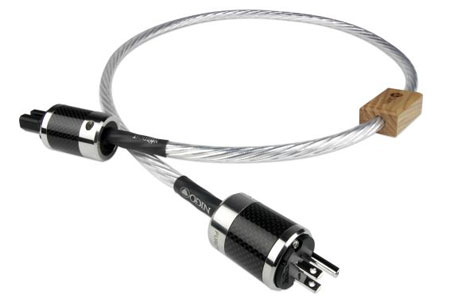
Of course, all cables are useless unless the equipment is supplied with power, so let's start with the Odin power cordafter all, if the AC-power signal isn't up to snuff, the gear won't perform its best, or so they say. The Odin power cord uses six close-tolerance, 16AWG, 99.99999-percent oxygen-free copper (OFC) conductors, each covered by an 85-micron layer of extruded silver and suspended in a dual micro mono-filament matrixtwo twisted strands of fluorinated ethylene propylene (FEP) are helically wound around each conductor to precisely space it from the insulating sleeve. Finally, the entire structure is enclosed in the company's proprietary TSC (Total Signal Control) shield.
The claimed result is a new level of power-transmission efficiency combined with superb mechanical damping and rejection of external RFI/EM interference. And the cost? A 1.25-meter length is $11,000, while 2.5m is $16,000, and 5m is $26,000.
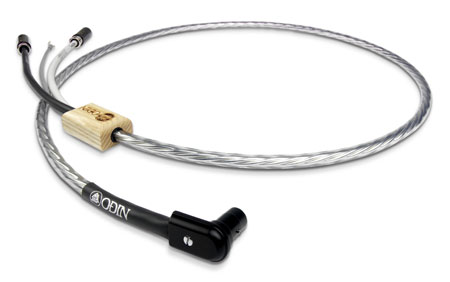
Starting at the beginning of the audio signal path, the Odin tonearm cable is designed to transport the miniscule signals from a turntable tonearmoften a thousandth the amplitude of a CD player's outputwithout causing irreparable harm. This cable includes a dedicated ground wire and uses four 23AWG, 99.99999-percent OFC conductors with extruded-silver sheathing in a dual micro mono-filament TSC design, which is said to tightly control the dielectric characteristics and increase mechanical damping, resulting in increased audible transparency and dynamic precision as well as a lower noise floor. A 1.25m length will set you back $10,000, and each half meter more adds $2000 to the cost.
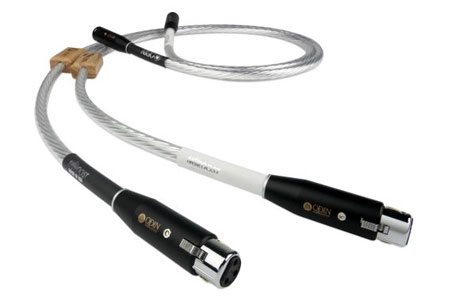
Analog interconnects are essential in any A/V system, and Nordost offers Odin interconnects in single-ended and balanced varieties with RCA and XLR connectors, respectively. Both types use eight 23AWG conductors of 99.999999-percent pure OFC clad with extruded silver in a dual micro mono-filament TSC design. These cables can be yours starting at $14,000 for a stereo pair 0.6 meter long; add $2000 for each half meter of extra length.
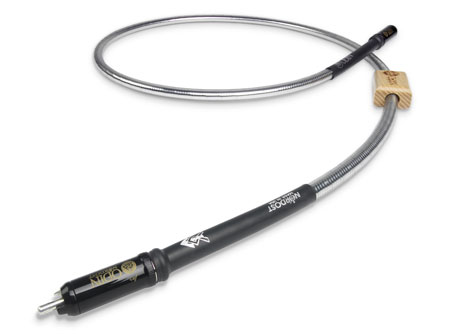
Most audiophiles have at least one digital source in their systems, so they need digital interconnects as well. Available with 75Ω RCA or BNC or 110Ω XLR connectors for S/PDIF or AES/EBU devices, respectively, the Odin digital interconnect uses all the same design elements as the company's other flagship cables, though the 75Ω version has only one 16AWG conductor, while the 110Ω model has two 18AWG conductors and two 22AWG drain wires. A 1.25m length of either version costs $10,000, while 2.5m is $13,000 and 5m is $19,000.
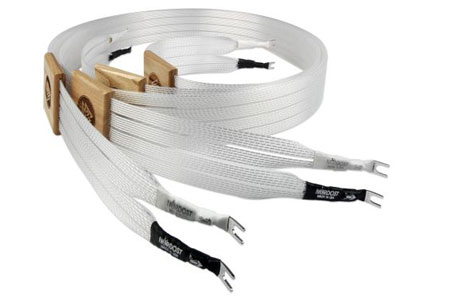
The last electrical leg of an audio signal's journey is the speaker cable. Using 24 20AWG conductors with the same construction parameters as the other Odin cables and available with either spade lugs or banana-pin connectors, these are arranged in four flat groups of six wires each to allow bi-wiring or bi-amping. A 1m stereo pair costs $20,000, and each additional half meter adds $3000.
You could easily spend six figures to connect all your gear with these cables, so the big question is how much improvement do they realistically provide? They've garnered glowing reviews in the audiophile press, but I contend that any improvements are most noticeable when the rest of the system is similarly ultra-high-endanything less will drown the effect of the cables in other problems. But if you've got the audiophile itchand the scratch to matchI'm willing to bet you can't do better than Odin.





























































